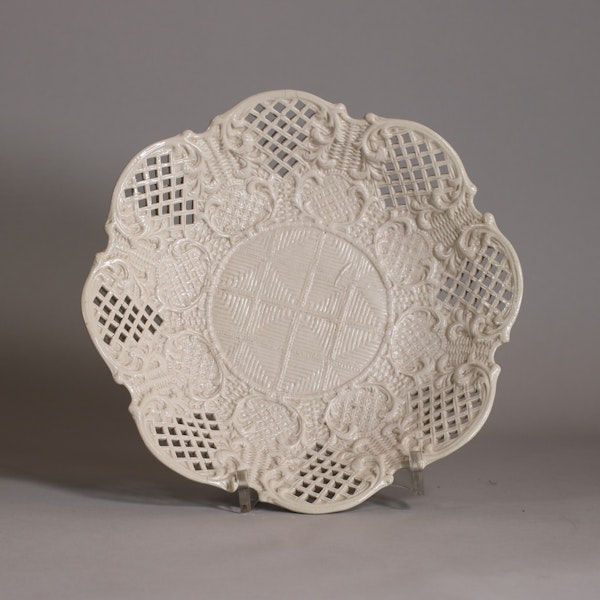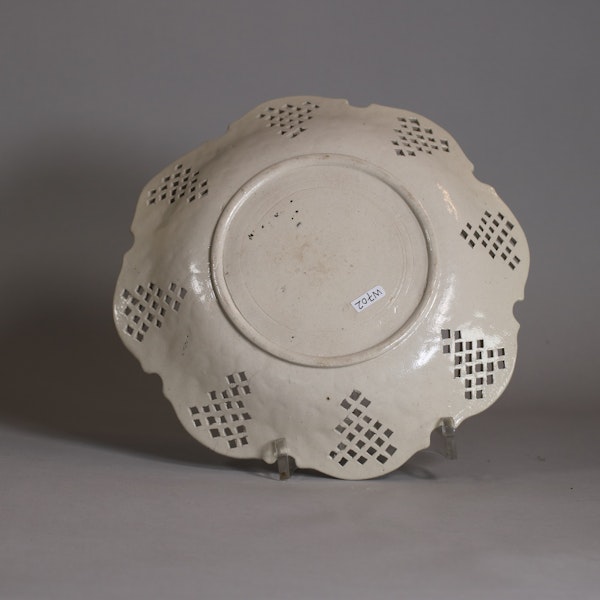Staffordshire white saltglazed pierced basket, circa 1750
Staffordshire white saltglazed pierced basket, circa 1750
POA
Description
Staffordshire white saltglazed pierced basket, circa 1750, with intricate piercing and basket-pattern design in relief; the central roundel encircled by eight foliate wreaths, the scalloped rim comprising eight further foliate panels containing pierced lattice design.
Dimensions:
Diameter: 20cm. (7 7/8in.)
Condition:
Minor hair crack to one panel of piercing
Notes:
A plate of very similar design can be found in the collection of the Victoria and Albert Museum (3106-1853). Saltglaze stoneware was produced in Britain from the latter half of the seventeenth century. Experimentation was possibly driven by the wares and techniques introduced by immigrant German potters settling in London at this time. Despite competition from kilns in Nottinghamshire, Derbyshire and London, by the late eighteenth century Staffordshire had become the largest producer of ceramics in Britain, partly owing to the local abundance of raw materials including clay, coal and salt. Saltglaze wares were produced by throwing salt into the kiln during the firing process. The reaction between the sodium in the salt and the silica within the clay produces a layer of sodium silicate, and gives the finished piece a glossy sheen and pleasing texture comparable to that of orange peel. Initially, decoration largely consisted of applied strips of clay, but later on a technique called ‘sprigging’ became popular. Complex reliefs and intricate designs could be made in separate molds using slip before being applied to the body of the vessel.
| item details | |
|---|---|
| Material and Technique | Saltglazed stoneware |
| Origin | British |
| Period | 18th Century |
| Condition | Very good |
| Diameter | 20cm. (7 7/8in.) |
Product REF: W702




